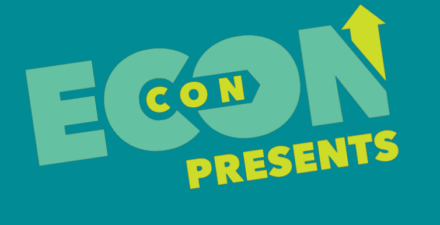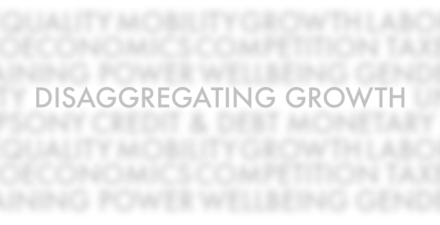Brad DeLong: Worthy reads on equitable growth, November 18–December 7, 2020
Worthy reads from Equitable Growth:
1. Back in 1993 and 1994, those of us working in the Clinton administration were focused on achieving rapid economic growth. We thought that, with rapid economic growth, it would then be much easier to push for more equality. And we thought that, without rapid growth, politics would inevitably be much more zero-sum and, well, racist and racialized. Clearly it did not work. Read Heather Boushey, “How to Make America More Equal,” in which she writes: “There is reason to believe that the United States can enact policies to transform its economy and society. Until recently, some of the conversations taking place among policymakers and around dinner tables—inspired by COVID-19, the deep recession, the Black Lives Matter movement, and the recent presidential election—would have been relegated to the edges of public debate. Today that is not the case. Yet the US political system is beset by deep partisanship and a constitutional and electoral system that makes it far easier to block transformative policies than enact them. But I am an optimist, and I still believe that the country could be at an inflection point, with the advantage going to those who develop and advocate progressive policies to reduce inequality and build an economy that pro- duces strong, stable, and broad-based growth.”
2. The coming of the Internet was supposed to see a rural and semirural renaissance. People would no longer be bound to their increasingly unpleasant commuting zones. People would be able to spread out and take advantage of our nation’s beautiful and wonderful abundant land endowment. I still do not understand why it did not work. If it were not the year of the coronavirus, I would try to corner Enrico Moretti, and ask him what he thinks and if he could please explain it to me. But we have a problem. And here it is well-documented. Read Raksha Kopparam, “Gaps in U.S. Rural & Urban Economic Growth Widened in the Post-Great Recession Economy,” in which she writes: “This divide in urban and rural outcomes was driven by changes in demographic and industry composition. Rural and nonmetropolitan areas have a higher share of older people over 65 years of age … Rural communities rely on specific industries for economic growth and sustainability. Rural counties in some states such as Texas and Oklahoma depended on the mining and fracking industries … Beyond farming, mining, and fracking, the rural economy relied heavily on the service industry … educational, healthcare, and social assistance … Growth in the rural service sector lagged behind similar industries in urban communities. In the South and the West, there was a 14 percentage point and 16 percentage point gap, respectively, in the growth of service output between urban and rural communities.”
Worthy reads not from Equitable Growth:
1. The sharp Adam Posen reminds us that Japan had only one lost decade, and that since then its policies—unorthodox as they have been—have been significantly more successful than the austerity practiced elsewhere in the global north: Read his “lessons from japan: high-income countries have common problems,” in which he writes: “Japan really had only one lost decade … The lessons from recent years are those of economic policies to emulate, as opposed to the lessons from before 2003 of which to avoid … Between 1990 and 2002, Japan had the lowest average per capita gross domestic product growth rate in the G7, and from 2003 through 2019, it has had the third highest and the second highest productivity growth rate. The relevant lessons for the rest of the world come from after 2012 … A high-income market democracy can respond to secular stagnation with sustained fiscal stimulus, and that can continue to stimulate private demand. Substantial public debt can accumulate to levels previously thought dangerous and the warning sign of fiscal danger to watch is when private investment bids up interest rates, not before. Some public investment can indeed be supply and productivity enhancing; attention should be on assessing the quality, not the specter of private capital misallocation.”
2. In retrospect, I should have recognized that excessive Federal Reserve trust in models estimated over samples that included the highly anomalous 1970s would be a problem. I think I did. But I had no idea how big a problem it would turn out to be, or how long the central bank would take to actually mark its beliefs to market. Read Matthew Yglesias, “Janet Yellen’s mistake,” in which he writes: “Skanda Amarnath, Director of Research at Employ America, told me, ‘Yellen has garnered a reputation for being dovish but her actual track record is far more mixed. The U.S. economy was slowing down in 2015 as a result of overseas weakness. But while other members like Lael Brainard had flagged the downside risks, Yellen and Vice Chair Stanley Fischer were more eager to set the stage for a series of hikes.’ She eventually reversed course on this, and the bad call was not necessarily all that consequential. But the basic issue is one the Biden administration will likely face again: how do you assess whether the economy is at full employment? Yellen and much of the Obama Administration got it wrong, and it would be good for Biden’s team to do better than this next time … Most of the great minds in the Democratic Party economic firmament made the wrong call about the state of the labor market in 2015–2016, and there was a cost to that. It’s very important that the Biden administration show better judgment about these questions, not least because it has a huge impact on what approach you take to negotiating with Republicans.”




